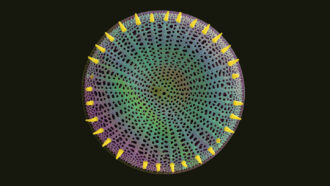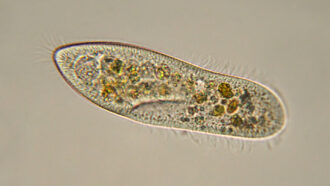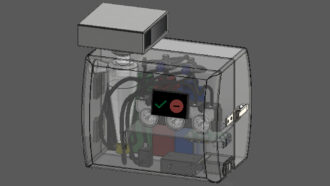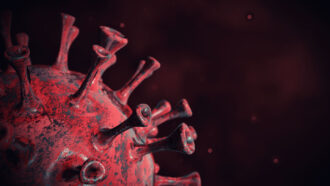Explainer: What is a virus?
Not quite alive or dead, these infectious agents prey on the living
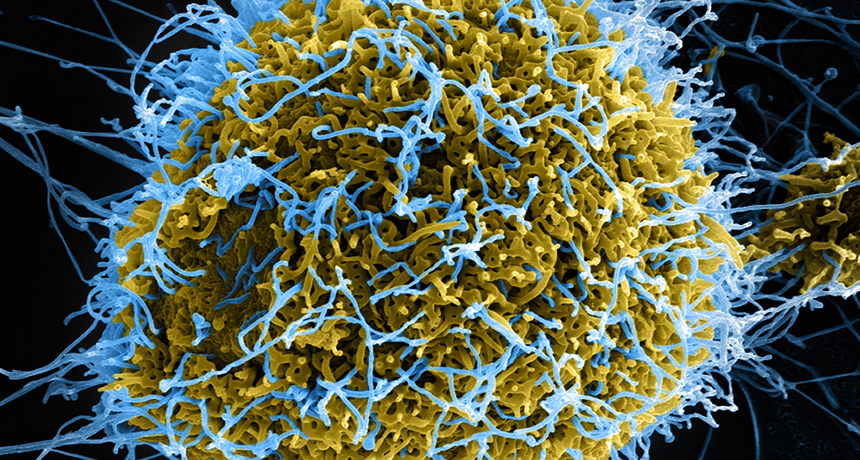
This colorized image shows Ebola virus particles (blue) budding from an infected monkey cell (yellow-green). Ebola is just one of many viruses that can infect people — and sometimes kill them
National Institute of Allergy and Infectious Diseases
Influenza. Ebola. The common cold. HIV/AIDS. Measles.
Viruses cause these diseases — and many more. Some are serious. Others, not so much. For better or worse, viruses are part of life.
It surprises many people to learn that viruses “live” in us but aren’t technically alive. Viruses can replicate only inside the cells of their host. A host can be an animal, plant, bacterium or fungus.
Viruses are sometimes confused with another family of germs: bacteria. But viruses are much, much smaller. Think of a virus as a tiny package jacketed in a protein covering. Inside is either DNA or RNA. Each molecule serves as an instruction book. Its genetic information provides instructions that tell a cell what to make and when to make it.
When a virus infects a cell, it sends that cell a simple message: Make more viruses.
In that sense, this virus is a hijacker. It breaks into a cell. Then it makes the cell do its bidding. Eventually, that host cell dies, spewing new viruses to attack more cells. That is how viruses sicken a host.
(By the way, a computer virus isn’t a real virus. It’s a type of software, meaning computer instructions. Like a real virus, however, a computer virus can infect — and even hijack — its host computer.)
The body can rid itself of many viruses on its own. Other viruses may present too big a challenge. Medicines to treat viruses exist. Called antivirals, they work in different ways. Some, for example, block the entry of a virus into a host cell. Others interrupt the virus as it attempts to copy itself.
In general, viruses can be hard to treat. That’s because they live inside your cells, which shelter them from medicines. (It’s also important to note that antibiotics don’t work on viruses.)
Best defense: Stay healthy
With viruses, the best defense is a good offense. That is why vaccines are so important. Vaccines help the body protect itself.
Here is how they work: Sometimes a germ — a bacterium or virus — enters the body. Scientists refer to it as an antigen. The body’s immune system usually recognizes the antigen as being a foreign invader. The immune system then produces antibodies to attack the antigen. That fight leaves the body protected. And that is usually true even if that invader infects it again. That long-lasting protection is called immunity.
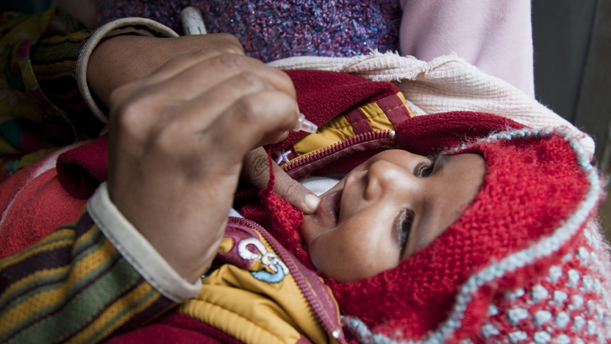
Vaccines provide immunity without the risk of an actual infection. A vaccine might include weakened or killed antigens. Once introduced into the body, these types of antigens cannot cause an infection. But they still can stimulate the body to make antibodies.
Over time, vaccines have reduced the number of infections (and deaths) linked to many viral infections. For example, vaccines have eliminated smallpox. The same is nearly true for polio; that disease continues to spread only in Afghanistan, Nigeria and Pakistan.
But not all viruses are bad. Some infect harmful bacteria. These viruses are called bacteriophages (Bac-TEER-ee-oh-FAAZH-ez). (The word means “bacteria eaters.”) Doctors sometimes deploy these specialized viruses as an alternative to antibiotics for treating bacterial infections. (Even more fascinating: Bacteriophages can transfer the DNA from one bacterium to another — even if the two bacteria are different species.)
Scientists have learned to harness viruses to do good in another way, too. These experts use the remarkable ability of viruses to infect cells. First, they alter the viruses to deliver genetic material to a cell. When used this way, the virus is called a vector. The genetic material it delivers may include instructions to produce a protein the body cannot make on its own.
